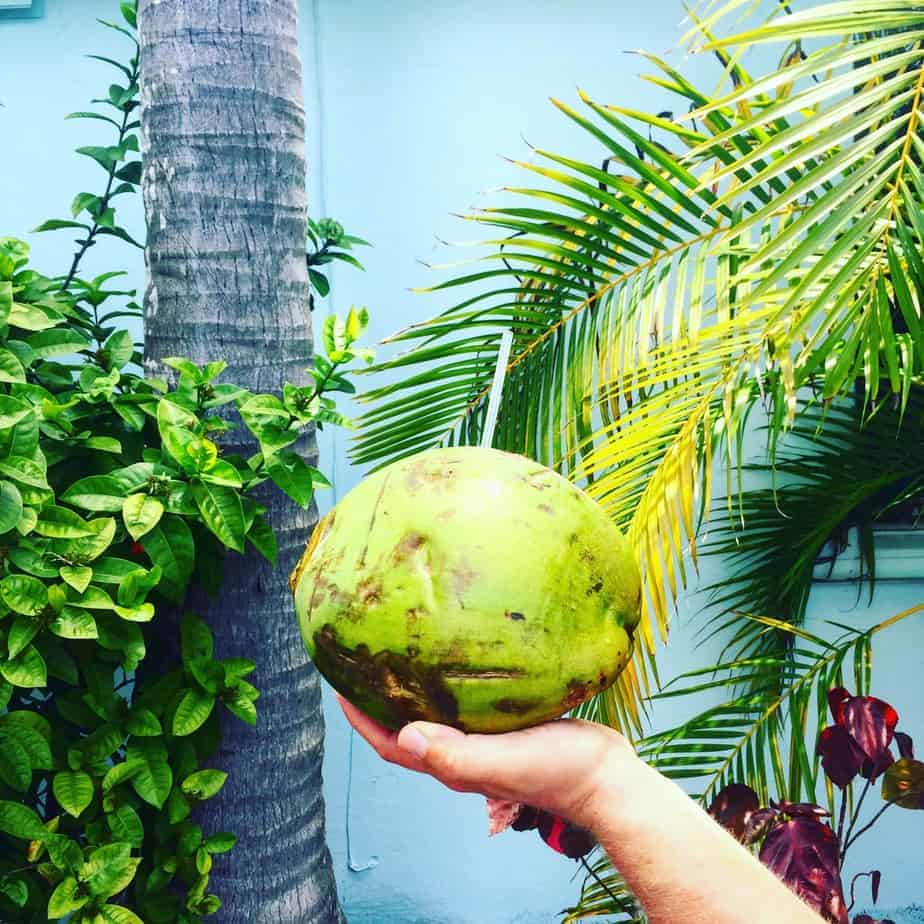The 12 Best Places for Camping in North Carolina | Tent Camping in NC
Want to enjoy the outdoors, connect with nature and sleep under the stars? Pitch your tent at one of these North Carolina campgrounds which offer some of the best tent camping in NC!
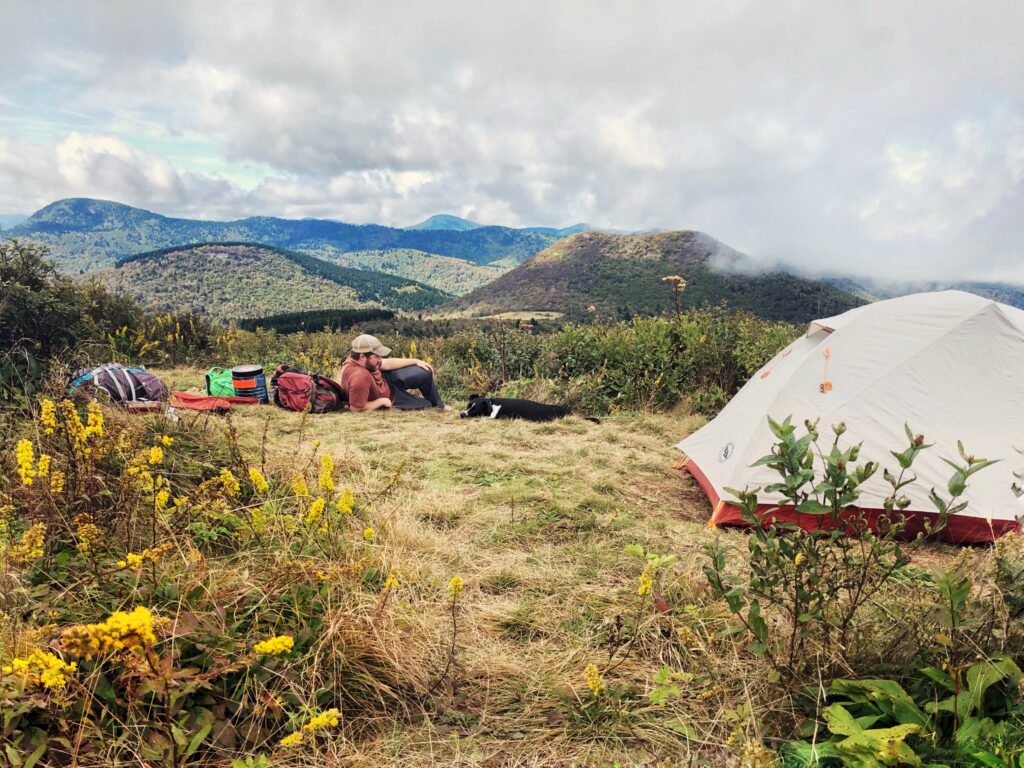
Planning a day trip, weekend trip or just looking for other things to do, places to visit, and where to eat across North Carolina? Check out Off the Eaten Path’s North Carolina Travel Guide, which features weekend itineraries, travel and restaurant recommendations across the Tarheel State.
Last week, we were dealing with record setting warm temperatures for winter in North Carolina.
While I cringed when I turned the air conditioner on in our house on January 1st, the balmy 70 degrees and afternoons spent in our backyard reading took me back to the week between Christmas and New Year’s Day a few years ago where we took a last minute, lakeside getaway to Lake James State Park to camp for a few nights. We set up our hammocks next to the lake, AJ fished, I read (Becoming by Michelle Obama was the book at the time), Bodie chewed on a few sticks and we just got to relax and reset during what is a normally incredibly hectic time, without freezing our booties off.
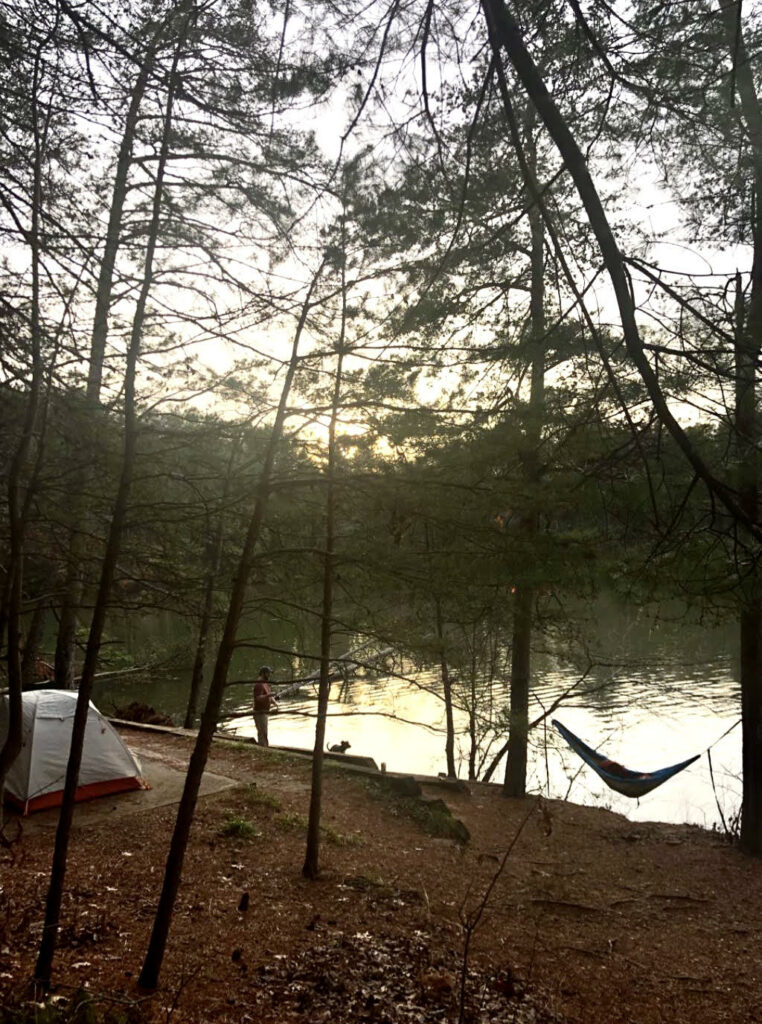
And while I wish I didn’t have to crank the AC in late December and early January, I can’t deny that one of the things I do like about living in North Carolina is our mild weather makes camping accessible all year round.
North Carolina is a beautiful place to discover, especially for nature lovers.
The state is not only home to an incredibly diverse landscape with the Blue Ridge Mountains to the west and the beaches in the east, but also has a wide range of national parks, national forests, national seashores, and state parks to explore.
This wide variety offers endless options for tent camping across the Tarheel state with a little something for everyone from backpacking and dispersed camping, to glamping, or even private campgrounds.
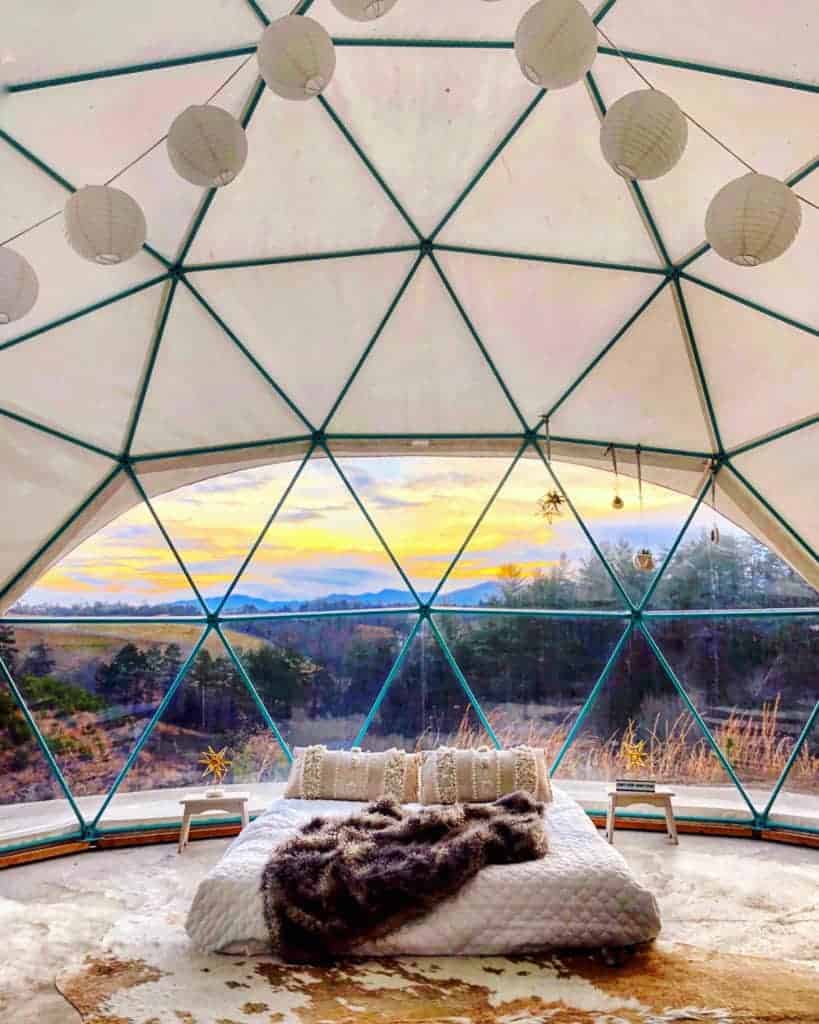
When it comes to tent camping, whether you’re a backcountry user (someone who is primitive camping or backpacking overnight) or a frontcountry user (people like day use visitors, picnickers and car campers) you should always leave no trace. Leave No Trace is comprised of seven principles which are the best practices people should follow in order to preserve, enjoy and protect our natural spaces including:
- Plan ahead and prepare
- Travel and camp on durable surfaces
- Dispose of waste properly (including packing out all trash, food and litter)
- Leave what you find
- Minimize campfire impacts
- Respect wildlife
- Be considerate of other visitors
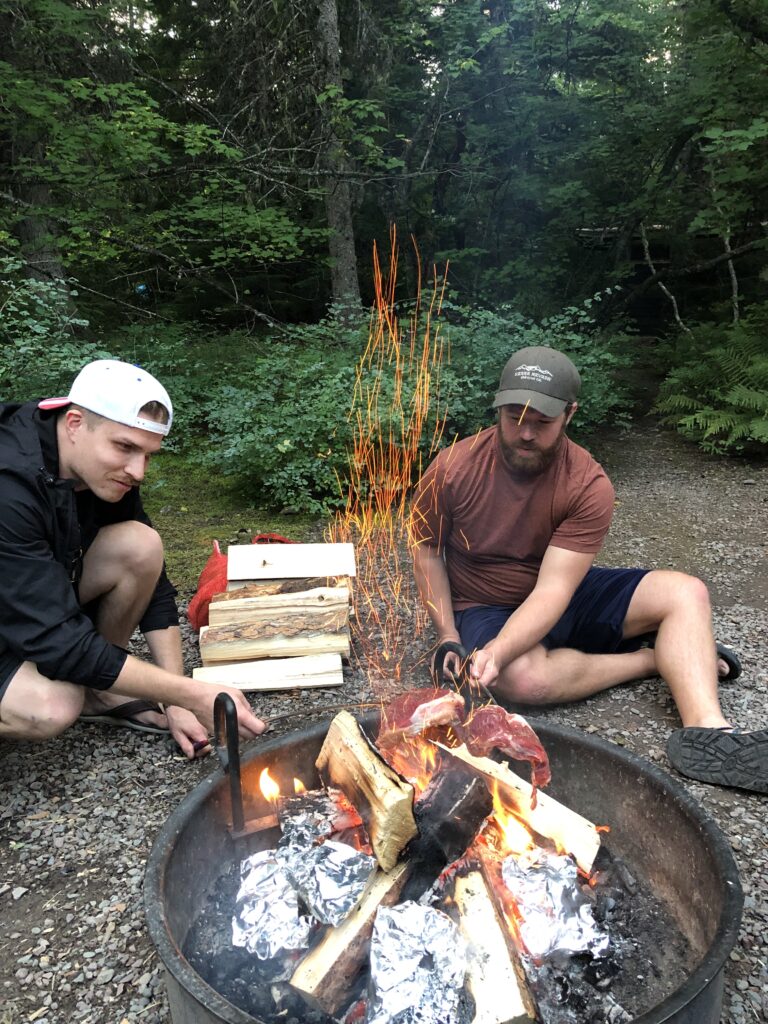
Great Smoky Mountains National Park
Great Smoky Mountains National Park is one of 14 national park sites in North Carolina and is actually the most visited National Park in the United States (with over 12 million visitors in 2019).
Great Smoky Mountains National Park offers a variety of attractions and activities for visitors including hiking, scenic drives, wildlife viewing, fly fishing, horseback riding, historical sites, and of course, tent camping!
There are three established campgrounds in the North Carolina side of the National Park where you can pitch your tent.
Balsam Mountain Campground offers 42 tent only sites during its camping season, which runs from May through October. Reservations are required and the cost is $17.50 a night for you to set up camp in one of the park’s more remote campgrounds, which gives you easy access to the Smokies picturesque mountain ranges and other recreational activities.
Cataloochee Campground is home to 27 tent sites in the historic Cataloochee Valley (known for elk sightings in the spring and the fall). The campground is open April through the end of October and offers a traditional, established campground experience (with flush toilets and drinking water) for $25 a night for a site.
Smokemont Campground is one of the campgrounds in Great Smoky Mountain National Park that is open all year round. Smokemont is home to 142 RV sites and tent sites in the forested part of the park just near the North Carolina and Tennessee border, making it one of the larger campgrounds in the park. Tent sites are $25 a night and offer tent pads, fire rings, picnic tables, plus the campground also has grills, flush toilets, drinking water, and a small camp store that sells firewood and ice.
PISGAH NATIONAL FOREST
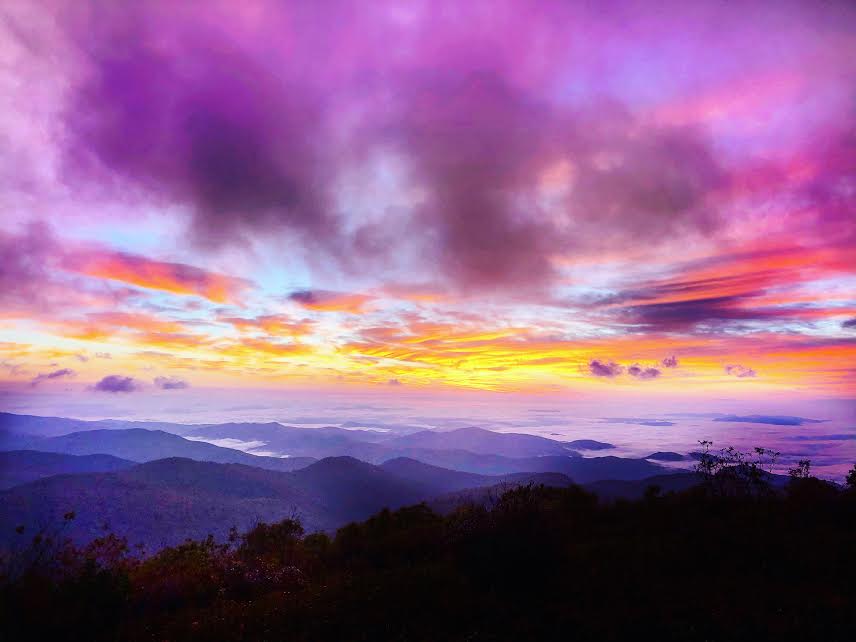
Covering over 500,000 acres in Western North Carolina, the Pisgah National Forest is a system of hardwood forests home to waterfalls, rivers, wildlife and hundreds of miles of hiking trails. It is divided into three different ranger districts (Appalachian, Grandfather and Pisgah) each offering endless opportunities for outdoor recreation and spots to sleep under the stars.
Can you camp for free at Pisgah National Forest?
Dispersed camping, also known as backcountry camping or backpacking, is free in the Pisgah National Forest, so while you can camp at no cost, you have to make sure that you are only camping in designated areas to limit your environmental impact. Two of our favorite areas for backpacking in the Pisgah National Forest are the Linville Gorge Wilderness and Shining Rock Wilderness.
Fees vary to camp at one of the eleven established campgrounds in Pisgah National Forest, and you can learn more details about campground costs and other amenities in the National Forest’s camping guide which is linked below.
Can you camp anywhere in Pisgah National Forest?
While the national forest has plenty of options open to both backcountry and frontcountry camping, dispersed camping is only allowed at designated sites in the following areas in the Pisgah National Forest:
- Pisgah Ranger District along the following corridors: Cathy’s Creek, Courthouse Creek, Wash Creek, Headwaters, Yellow Gap and Avery Creek;
- Appalachian Ranger District in corridors along Big Ivy Road, Cold Springs Creek and River Road/ French Broad River;
- Grandfather Ranger District along the Curtis Creek corridor.
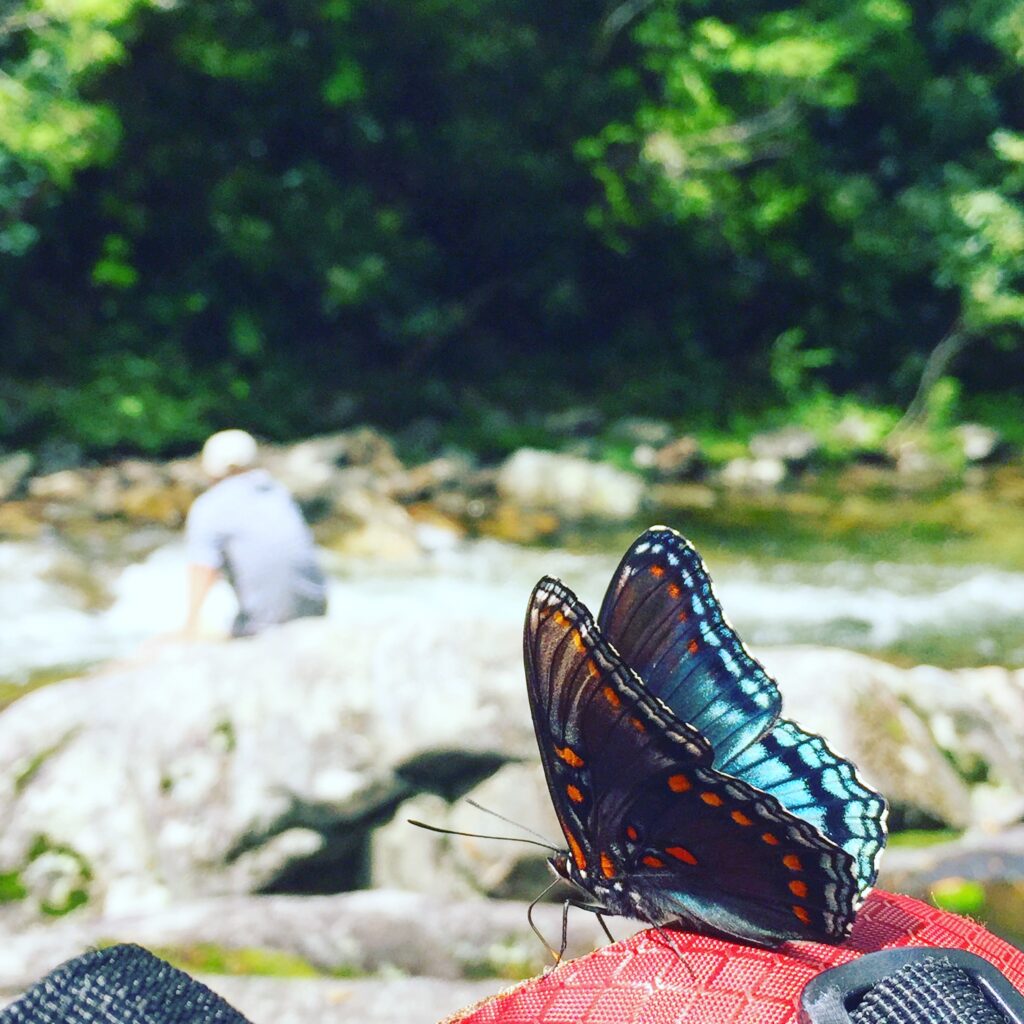
There are several areas closed to dispersed camping including Bent Creek Experimental Forest; the Cradle of Forestry in America; the Wilson Creek corridor; Silvermine Creek; developed day-use sites and campgrounds; and many wildlife openings. If you’re looking for camping site specific information, you should call the ranger districts directly.
There are several established campgrounds throughout the forest that are perfect for car camping and a few even take advance reservations including Davidson River Campground, Lake Powhatan Campground, Harmon Den Campground, and North Mills River Recreation Area. The Pisgah National Forest has a comprehensive camping guide which includes fees and opening and closing dates available on their website.
NANTAHALA NATIONAL FOREST
The Nantahala National Forest is North Carolina’s biggest national forest encompassing over 530,000 acres of land in the mountains and valleys of southwestern North Carolina. Similar to the Pisgah National Forest, the Nantahala National Forest is divided into three ranger districts whose names come from the Cherokee language: Cheoah, Tusquitee and Nantahala.
Similar to dispersed camping regulations in the Pisgah National Forest, there are ample opportunities for free, dispersed camping in the Nantahala National Forest and you just need to make sure you are camping at designated sites in the following areas:
- along Snowbird and Santeetlah Creeks and around Santeetlah Lake in the Cheoah Ranger District;
- along the Tellico River in the Tusquitee Ranger District.
Areas closed to dispersed camping include Balsam Lake; the Coweeta Experimental Forest; US 64’s Cullasaja Gorge corridor; Fontana Lake’s Finger Lake Day-Use Area; the 1,000-foot corridor along the Nantahala River between Silvermine Creek and Junaluska Road, including any island in the river; developed day-use sites and campgrounds; and many wildlife openings. If you’re looking for camping site specific information, you should call the ranger districts directly.
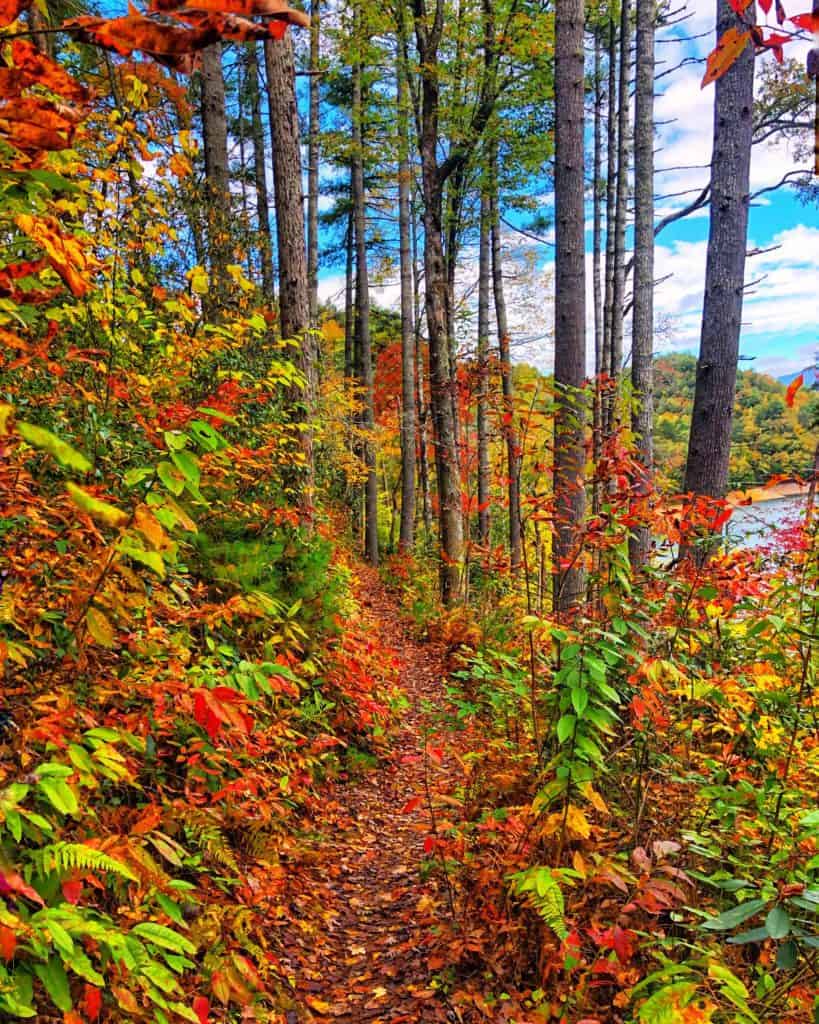
There are also 14 established campgrounds for tent camping in the Nantahala National Forest (one of our favorites is the Tsali Campground near Bryson City NC) and a six take reservations in advance. The Nantahala National Forest has a comprehensive camping guide which includes fees and opening and closing dates available on their website.
BLUE RIDGE PARKWAY
The 469 mile thoroughfare between Shenendoah National Park in Virginia and Great Smoky Mountains National Park in North Carolina is one of the most scenic routes in America, tracing the ridges of the Blue Ridge Mountains. The parkway that winds through the Appalachian Mountains is not a National Park (it is technically a National Parkway) but it is operated by the National Park Service, which operates the parkways seasonal developed campgrounds.
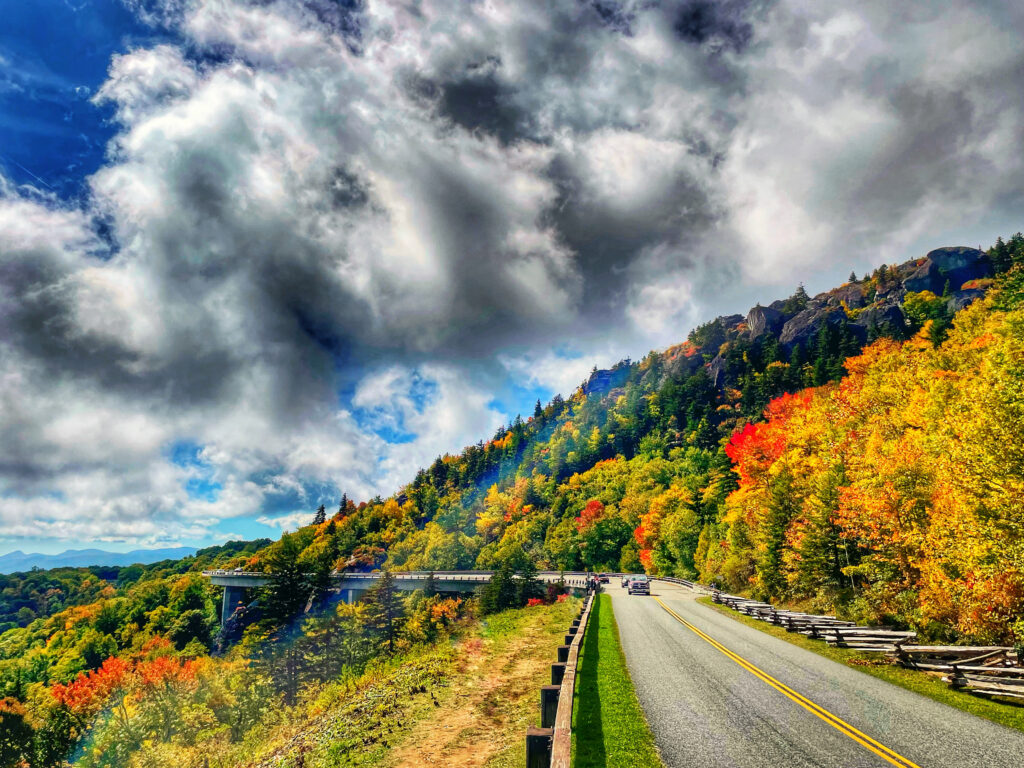
Can you camp overnight on the Blue Ridge Parkway?
Yes, but you can’t just park your car at a scenic overlook and camp. There are several designated camping areas operated by the NPS along the parkway that allow camping, and there are many private campgrounds along the 469 mile loop that are open year round.
Can you camp anywhere along the Blue Ridge Parkway?
Camping is only allowed in one of the Parkway’s eight designated camping areas. There are also three backcountry campgrounds (Rocky Knob, VA, Doughton Park, NC and a single hike in site at Julian Price Park, NC) which allow backpacking at certain sites with a permit.
While it seems backcountry camping is limited along the parkway, a lot of the backpacking we do in the North Carolina mountains is just off the parkway in Pisgah National Forest along the Appalachian Trail. In my opinion one of the best places to camp in the entire state is at Black Balsam Knob (one of our favorite hikes near Asheville), approximately milepost 420 off the parkway. The short hike up to the mountain bald is less than a mile and a half, and is the perfect place to unplug for a night or two where you can get sweeping sunset and sunrise long range views from your tent.
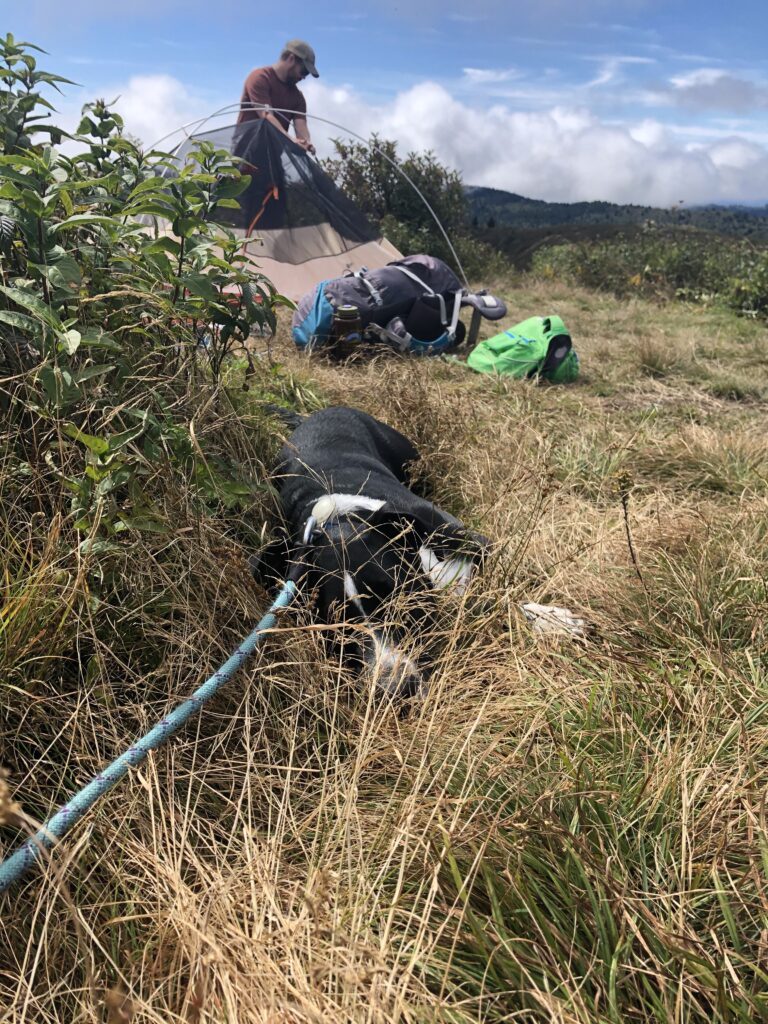
How many campgrounds are along the Blue Ridge Parkway?
The Blue Ridge Parkway has eight campgrounds that are open seasonally (usually from April or May until the end of October) for tent campers and RVers. The specific opening and closing dates are listed annually on the National Park Service’s website. All of the parkway’s campgrounds offer restrooms, drinking water, picnic tables and grills, but they do not have full hookups and only two of them (Julian Price Park Campground and Mount Pisgah Campground) have showers. Five of the parkway’s eight campgrounds are in North Carolina:
- Doughton Park Campground 239.2
- Price Park Campground 296.9
- Linville Falls Campground 316.4
- Crabtree Falls Campground 339.5
- Mount Pisgah Campground 408.8
MOUNT MITCHELL STATE PARK
The campground at Mt. Mitchell State Park is one of our favorites…it offers incredible views and easy access to the Deep Gap Trail which starts at Mount Mitchell’s summit.
Sleep under the stars at North Carolina’s first state park and on the highest peak east of the Mississippi at one of Mount Mitchell’s nine tent camping sites. The family campground is open seasonally May 1 through October 31 and each site has a grill and a picnic table, and does have restrooms but no hot water. If you prefer roughing it (yes, camping is already roughing it but we’re talking dispersed camping with no bathrooms), Mount Mitchell State Park is also open to backpackers…backpacking campers can leave their cars in the park overnight to camp in the Pisgah National Forest.
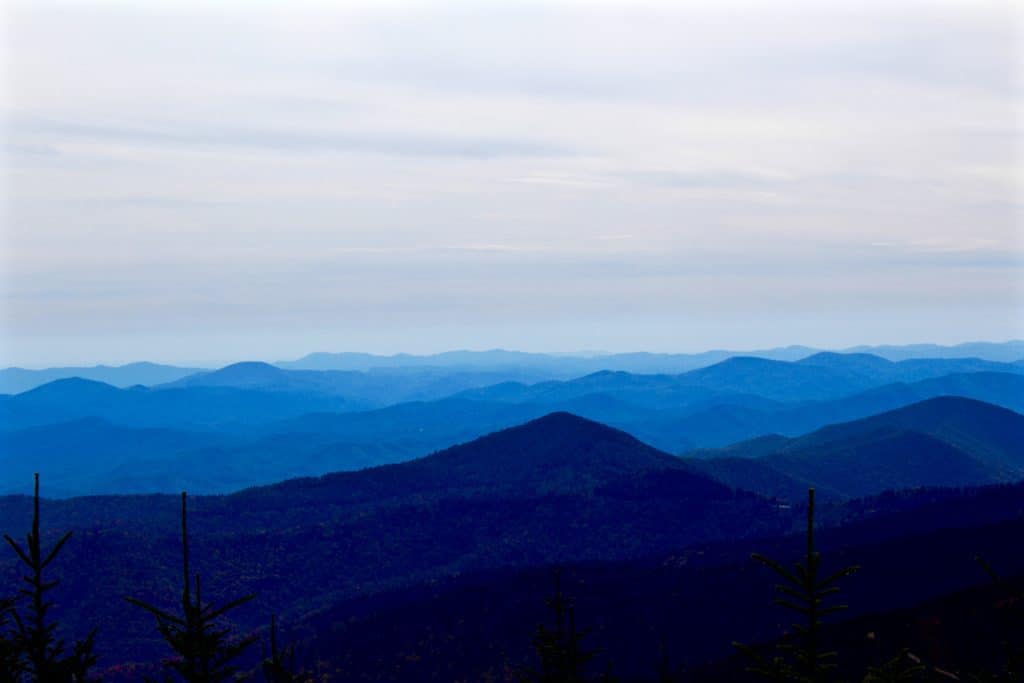
LAKE JAMES STATE PARK
One of the best tent camping spots in North Carolina (and another of our absolute favorites) is Lake James State Park. Lake James is a 6,812 acre lake located at the base of the Blue Ridge Mountains between Marion and Morganton.
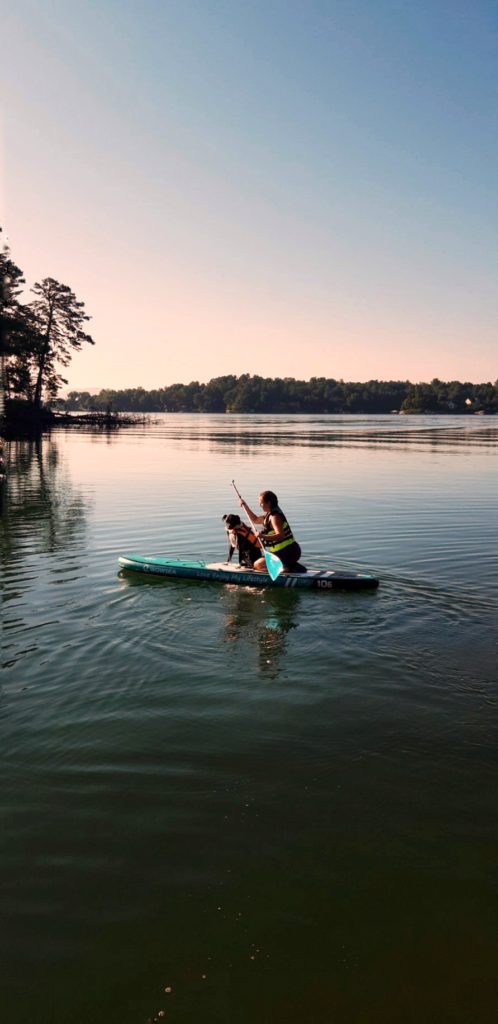
The state park is located along its shores and is home to 25 miles of hiking, mountain biking, and nature trails, and three different camping areas with three different and unique camping experiences: the Paddy’s Creek area which is a drive in campsite with 33 sites (this one is the most accessible), the Catawba River area which boasts 20 walk-in, lakeside sites (this is are absolute favorite place to pitch our tent and we think its one of the best campgrounds in North Carolina), and there are 30 paddle-in sites on the Long Arm peninsula (yes you read that right, these sites are only accessible by boat…you can’t hike or drive to these campsites).
SOUTH MOUNTAINS STATE PARK
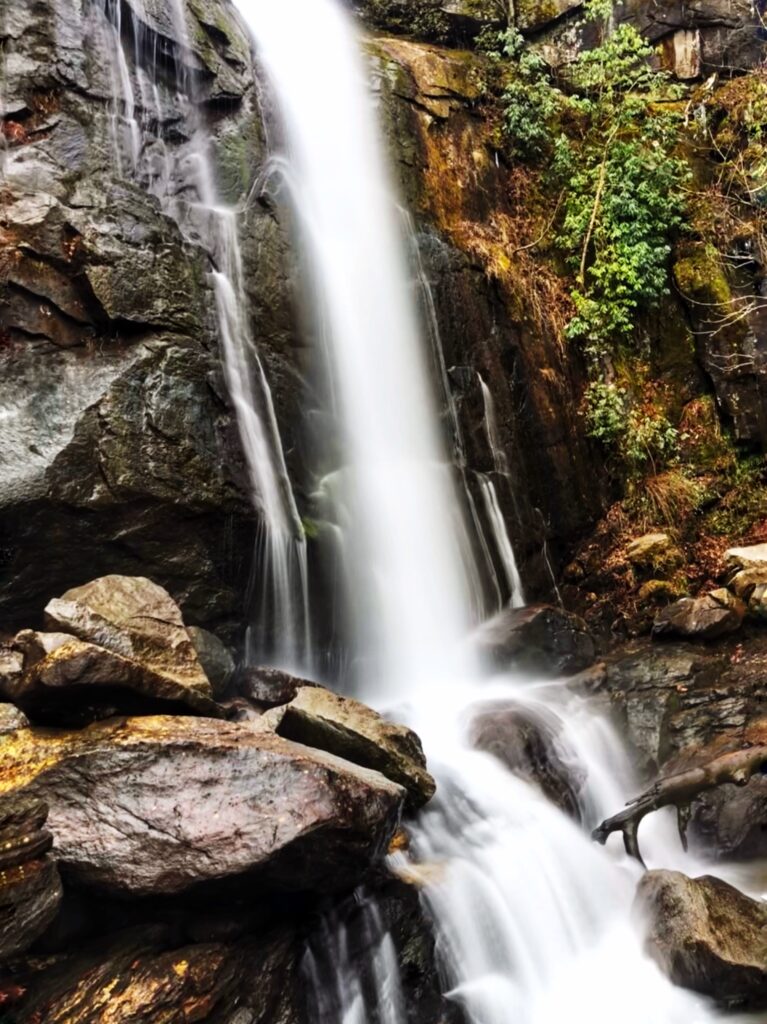
Like Lake James and Mount Mitchell, another North Carolina State Park, South Mountains State Parks offers a variety of different tent camping options depending on what you’re looking for. The drive in campground is easily accessible and offers a mix of tent campsites and RV hookups (and is home to a bathroom with hot showers).
We’d recommend you skip the shower for the weekend and book one of the state park’s 24 primitive sites at seven different locations throughout the park, where you can hike (anywhere between 1.4 miles and 5.4 miles from your car) past the park’s gorgeous cascading waterfall, cross trickling mountain streams, and take in its lush trees and mountain views before setting up camp (we backpacked in South Mountains State Park in June 2020 and for a remote backpacking site we loved the peace and quiet but also that our site had amenities like a fire ring and picnic table).
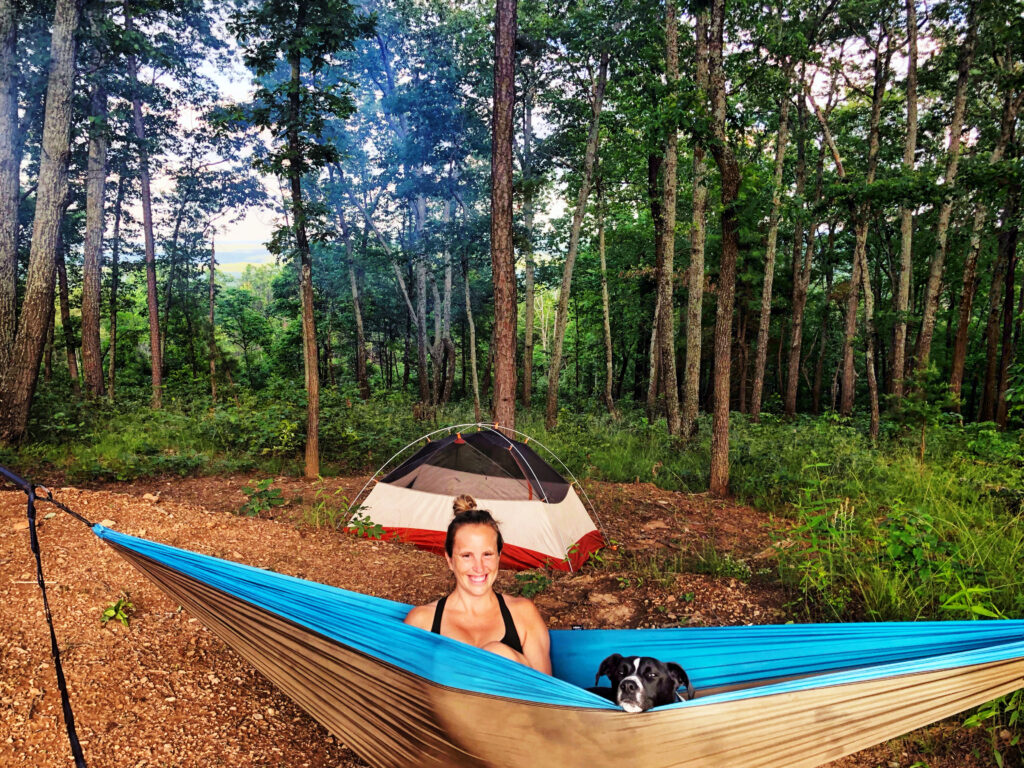
HANGING ROCK STATE PARK
Hanging Rock State Park was created in the 1930s as a Civilian Conservation Corps project and sits in the Sauratown Mountain Range, offering beautiful views, picnic areas, a swimming lake, 20 miles of trails and a simple, two loop campground with 73 RV campers and tent campsites that is open year round (the campsite does have drinking water, bathhouses and showers but they are closed throughout the winter giving campers access to pit toilets only in colder months).
Hanging Rock State Park is also home to several vacation cabins that are available to rent year round, which can sleep up to six people and are equipped with private bathrooms, a living room, a kitchen with dining space and two bedrooms.
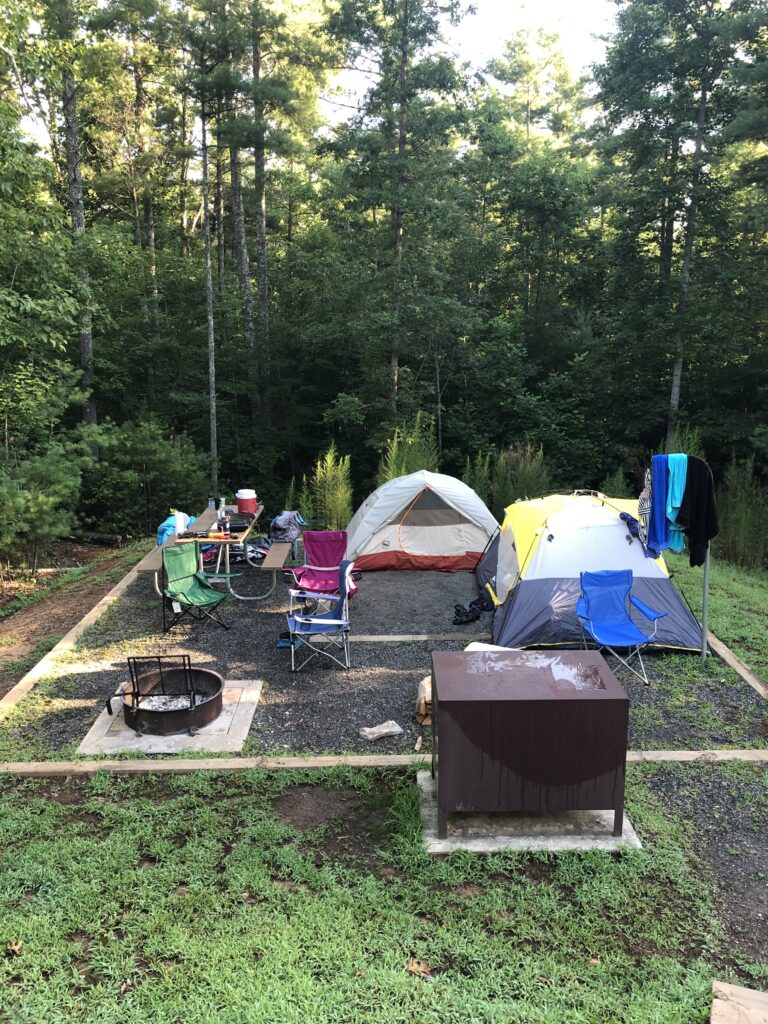
MORROW MOUNTAIN STATE PARK
Morrow Mountain is one of the highest peaks in the Uwharrie Mountains in central North Carolina. While they use to tower nearly 20,000 feet over sea level, the pinnacle is part of the remains of one of the oldest mountain ranges on the East Coast that have gradually eroded and worn away over time.
While the summit of Morrow Mountain is one of the focus points of the state park, boating and fishing are also available on nearby Lake Tillery (and the park has kayaks, canoes and rowboats available to rent), and an Olympic size swimming pool is open between Memorial Day and Labor Day.
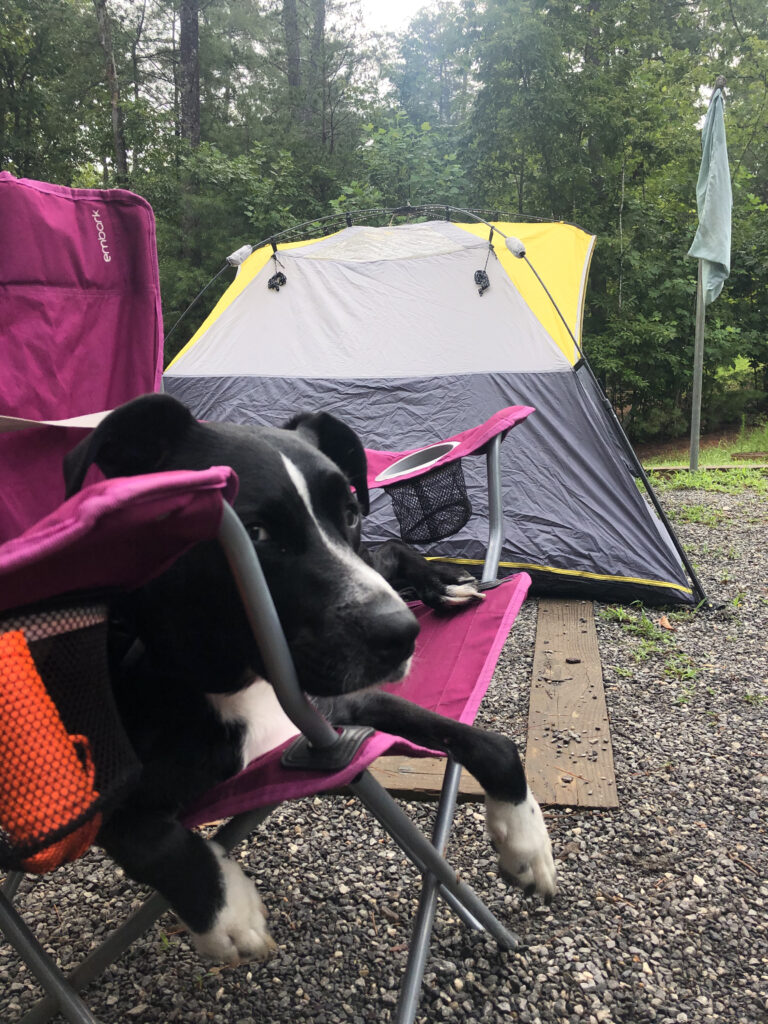
The 106-site campground is one of the largest campgrounds at a North Carolina State Park and each site is rather spacious and equipped with a fire pit, grill and picnic table. One loop does have 22 sites with electric hookups but there are no water or sewer hookups at the campground. Morrow Mountain also has a primitive campground which is a two mile hike from the park office and has six rustic cabins available for rent.
CAPE LOOKOUT NATIONAL SEASHORE
Cape Lookout National Seashore preserves 55 miles of beaches and coastline from Ocracoke Inlet in the northeast to Beaufort Inlet in the southeast (a visit to Cape Lookout National Seashore is one of the best things to do in Beaufort NC).
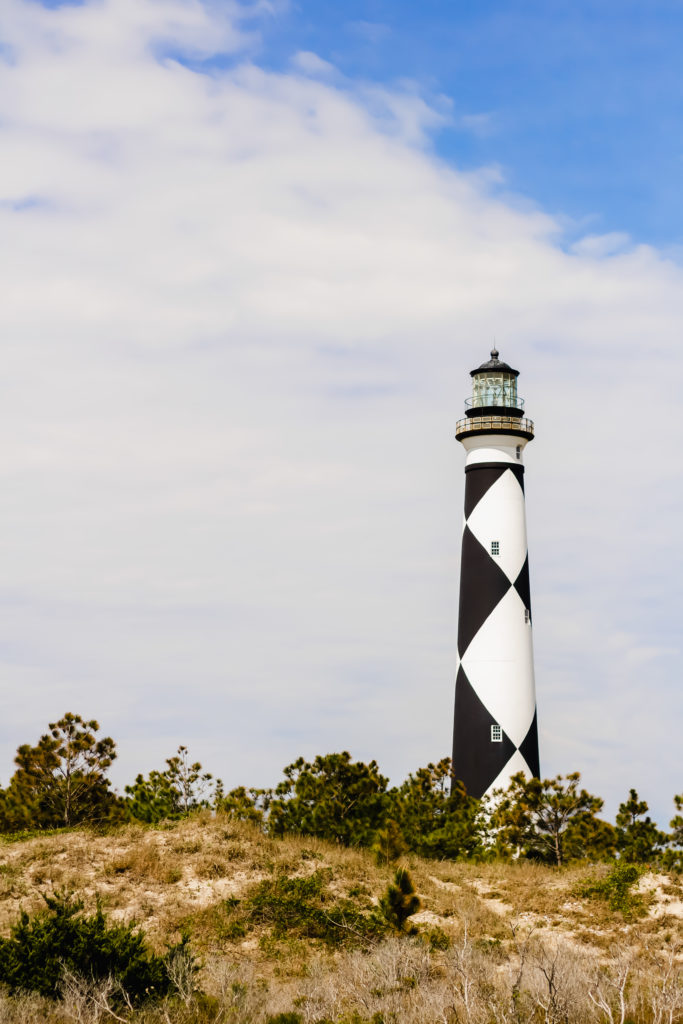
The seashore is made up of three barrier islands and includes two historic villages, wild horses, and the Cape Lookout Lighthouse. Because the barrier islands are undeveloped, they can only be reached by boat or ferry and offer few amenities.
Camping is allowed within Cape Lookout National Seashore but all camping is primitive beach camping which means there are no designated campgrounds. You can set your campsite up almost anywhere on the beach but campsites are not allowed 100 feet from wells, shade shelters, bulletin boards, docks or other structures and must be at least 100 yards from the lighthouse and from any cabin or house. Camping is not permitted on Harkers Island, in Portsmouth Village, in the Cape Lookout Light Station complex, in the Cape Village, in long term parking areas, or on property held under private lease. Campsites also cannot be set up on top of dunes.
Because Cape Lookout National Seashore is undeveloped, there are no camp stores or other amenities on the barrier islands. You’ll need to make sure you pack everything you need to bring with you, including clothes, comfortable shoes, towels, and all the fresh water and food you’ll need for your entire visit. There are also no trash cans on the islands and campers must take all trash with them when they leave.
CAPE HATTERAS NATIONAL SEASHORE
While we usually stay in a beach house during our family’s annual trip to the Outer Banks, we have camped at the OBX several times (at both the Oregon Inlet Campground and Frisco Campground) and the experience is unparalleled–camping on a barrier island gives you a special look and connection to the beauty and nature of the seashore.
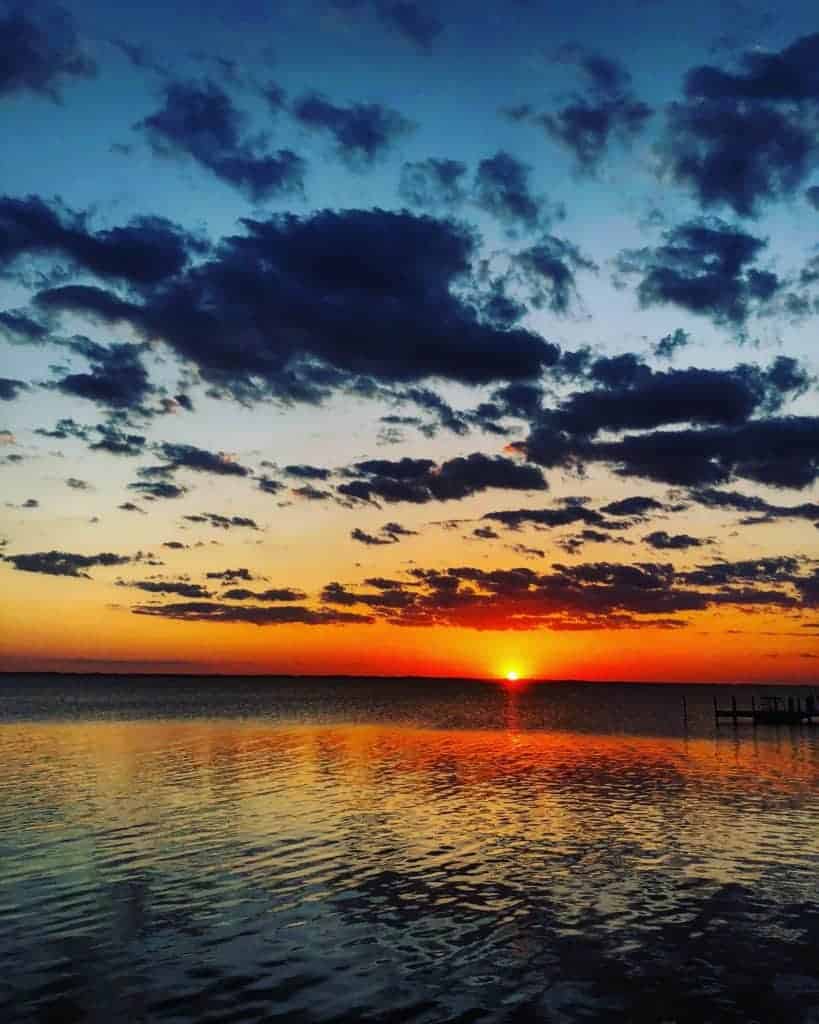
Cape Hatteras National Seashore has four established campgrounds within the park that are managed by the National Park Service spanning from Nags Head to Ocracoke Island:
- Oregon Inlet Campground is located in Nags Head. It has 107 campsites and is open all year round.
- Cape Point Campground is located in Buxton (near the Cape Hatteras Lighthouse). It has 202 sites and is open from April through November.
- Frisco Campground is located in Frisco. It has 127 sites and is open from April through November.
- Ocracoke Campground is located on Ocracoke Island, which is only accessible by a vehicle ferry that leaves from Hatteras Island or Cedar Island. It has 136 sites and is open all year round.
All of the campgrounds have tent, trailer and RV sites and can take reservations in advance. Cost per night ranges from $20-$30 dollars depending on the campground. While the campgrounds are not located on the beach, all are a short walk to the Atlantic Ocean.
CAROLINA BEACH STATE PARK
While most people visit Carolina Beach to enjoy the sand and surf, one of the draws of Carolina Beach State Park is its location on the Cape Fear River which provides visitors with a variety of unique and distinct coastal habitats. The 83-site family campground is shaded by towering trees and is the perfect home base for a coastal escape while you explore the parks hiking trails, visit its secluded fishing spots, or enjoy a day at the beach. PS: Carolina Beach is included in Off the Eaten Path’s Best Beaches near Charlotte NC guide!



